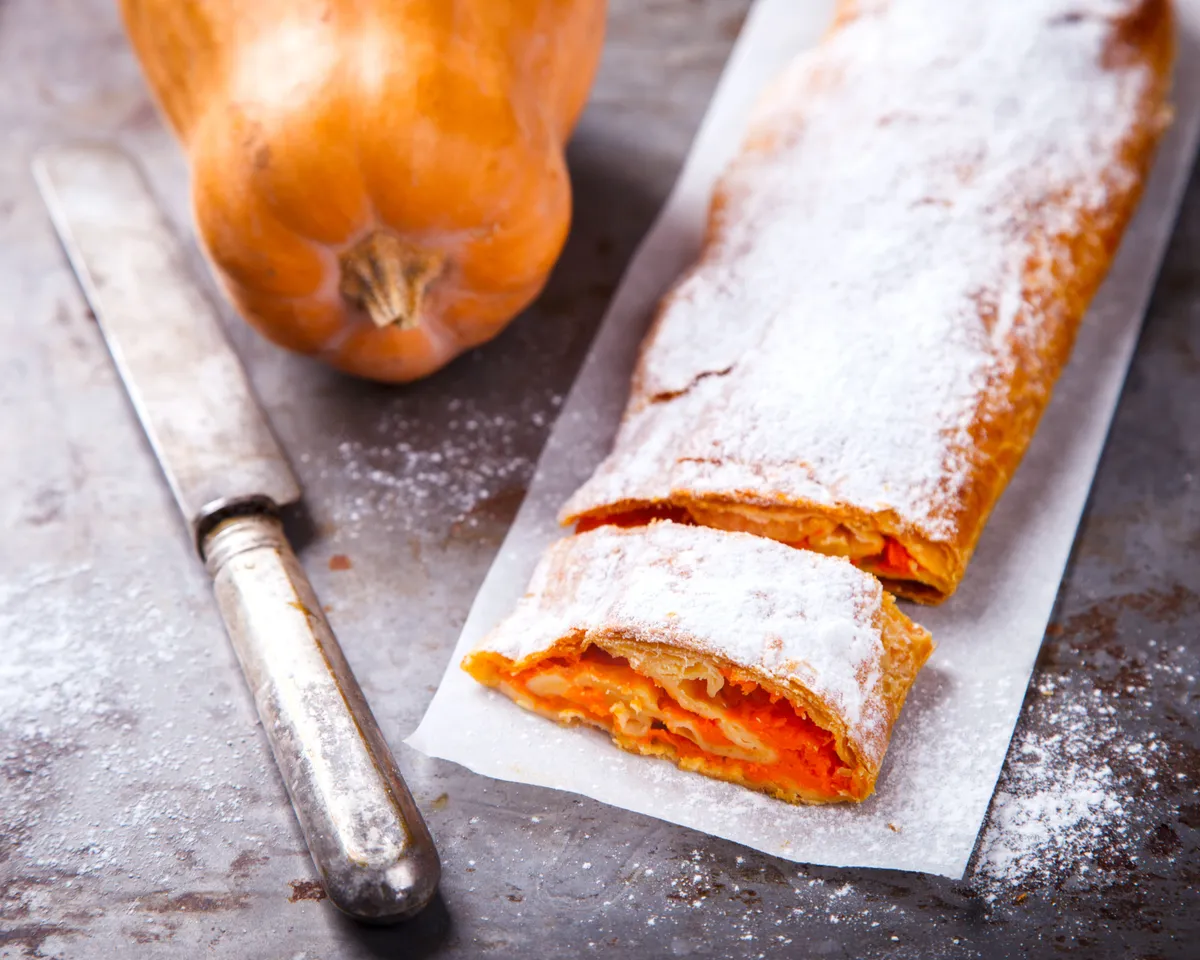Halloween celebrations today are mere echoes of our ancient, chilling Celtic customs. All Hallows Eve or All Saint's Day and autumn festivities can trace their roots to three pagan traditions and festivities from centuries past.
Modern day celebrations often involve children dressing up in scary Halloween themed costumes to take part in a local 'trick or treat' by knocking on the door of their neighbours to collect sweets or other small tokens. However, the historical roots of Halloween are much more sinister...
Our haunting guide looks at the history of Halloween customs in the UK, its ancient origins, plus tips on how to carve a pumpkin (safely!) and tasty pumpkin recipe ideas.
When is Halloween?
In modern times, Halloween always falls on 31st October and is celebrated on this date worldwide. However, Halloween itself dates back to pagan times. In 2023, Halloween falls on Tuesday 31st October.
Why do we celebrate Halloween?
The origins of Halloween date back to the ancient Celtic festival of Samhain. Meaning ‘summer’s end’, this Feast of the Dead heralded the beginning of winter and the ‘darker half’ of the year. Samhain stems from Ireland, Scotland and the Isle of Man, where the dead were honoured through the burning of a sacred, communal bonfire built by the druids.
The bones of sacrificed animals were cast onto the flames, which incidentally forms the origins of the word ‘bonfire’. People from the community brought harvest food for a great feast and some wore costumes made from animal skins or heads. It was thought to be a ghostly time of year when the spirit world made contact with the physical world which is where the name Halloween comes from. It was previously known as All-hallows-even and then Hallow Eve.
From haunted walks to frightful events, find ideas for a Gothic day out this Halloween.
Other Halloween customs
On the eve of Calan Gaeaf- the first day of winter - the people of Wales would celebrate a festival similar to that of their Celtic cousins. Feasting, bonfires and prophecies were all central to the proceedings. This night was also one of several nights of the year where the Cwn Annwn (Hounds of the Otherworld) would hunt the souls of wrongdoers for their master, Arawn. The growl of the hounds would be at its loudest far away and would become softer and softer as they grew nearer. As the sun sets this Hallowe’en, stay clear of Cadair Idris in Snowdonia, if you wish to avoid the hunting grounds of Wales’ most abominable creatures.
Cornwall’s version of the festival marking the first day of winter was less sinister and involved lots of apples. Known as Kalan Gwaw, apples acted as the centrepiece for a great harvest feast celebrating fertility rather than the dead. There was a strong focus on looking towards the future and included customs such as throwing nuts into fires to predict the fidelity of one’s partner, and apples played a large part in prophecy games and were presented to family and friends as tokens of good luck for the hard winter months ahead.
What is All Saint's Day?
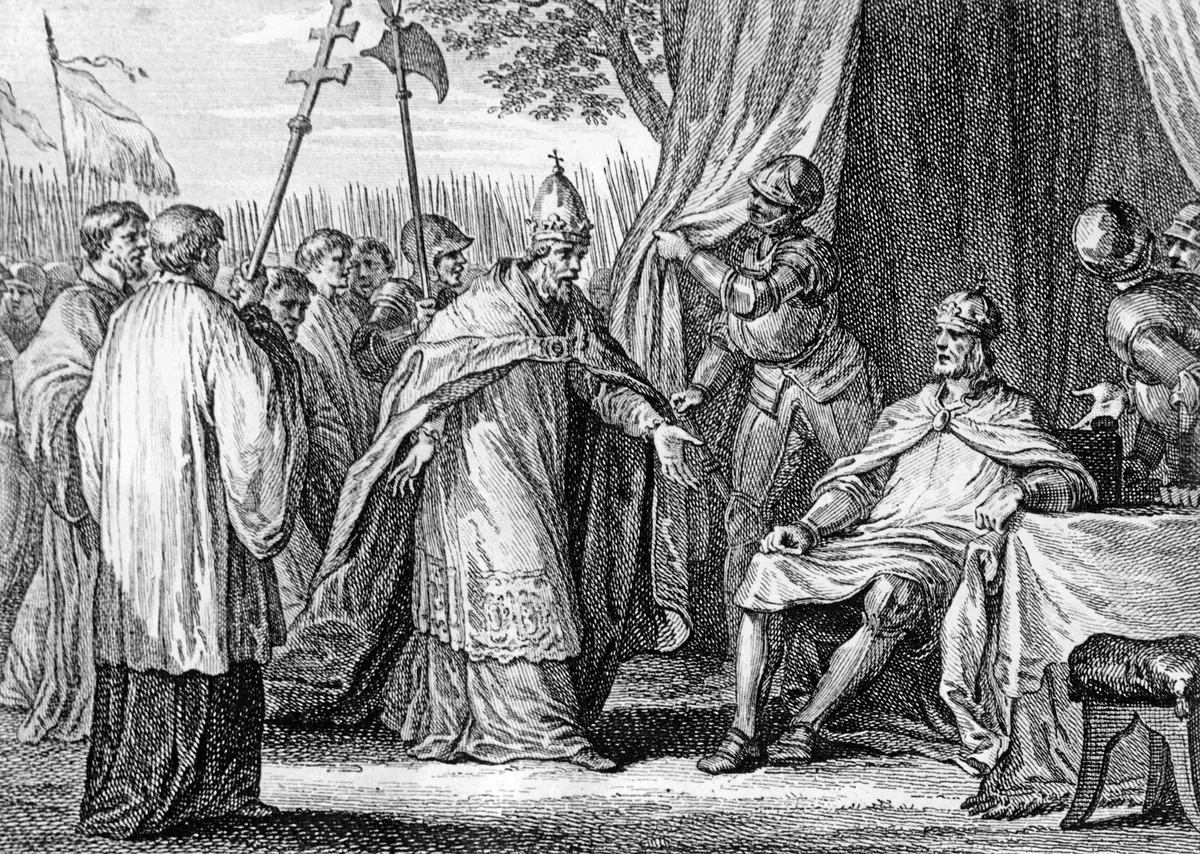
These days, Halloween celebrations are more or less over in one night. But in the Christian calendar of centuries past, Halloween was just the beginning of three days of commemoration as part of a religious event known as All Saints’ Day.
Read our historic guide to All Saint's Day
What is the history of Halloween pumpkin carving?
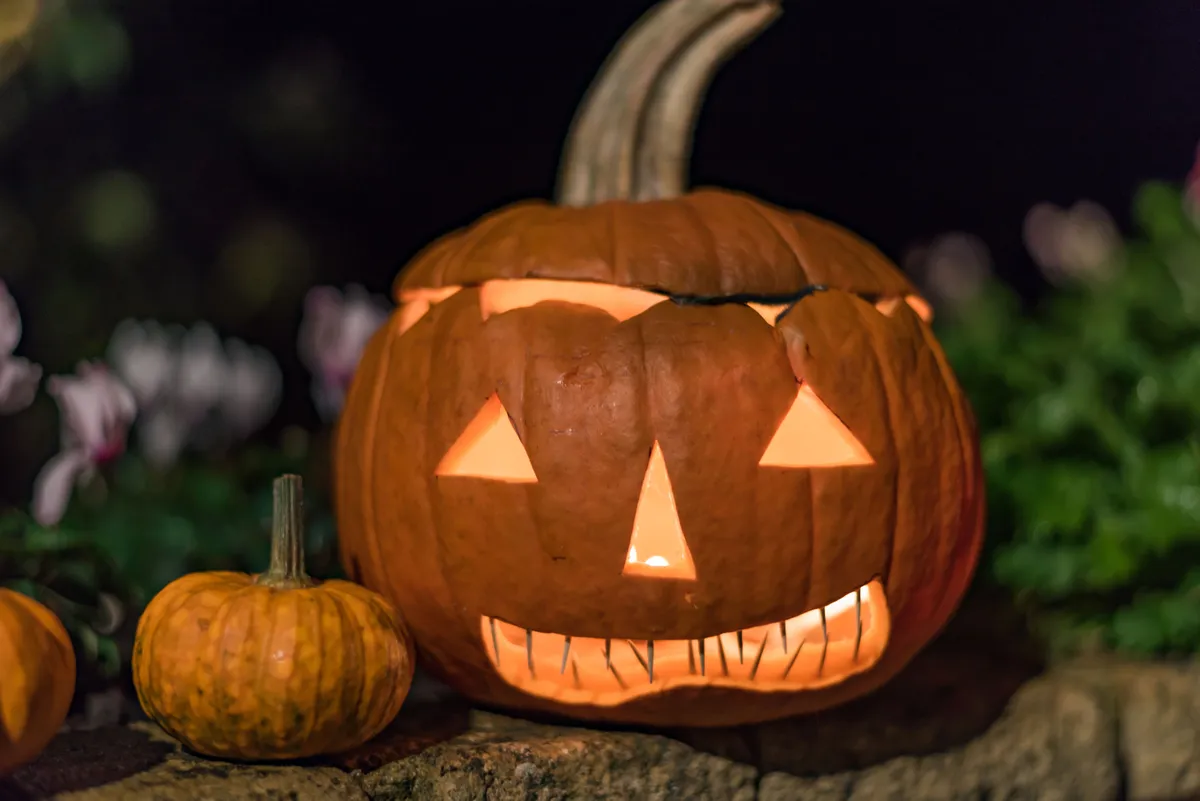
Every Halloween, glowing orange faces scowl at you from doorsteps, as the Halloween tradition of carving pumpkins commences. This tradition began in Ireland in response to a popular folktale about a man who carried a carved-out turnip filled with glowing coal with him in the afterlife.
Irish immigrants introduced the custom to America, where the round orange pumpkins we use today are readily available, and the ‘Jack-o’-lantern’ was born. Since the 1990s, pumpkin carving for Halloween has become an increasingly popular activity across Britain.
How to carve a pumpkin safely
This Halloween, learn how to carve the perfect pumpkin with our simple step-by-step guide:

- Using a sharp knife, cut around the top of the pumpkin.
- With a large spoon, scoop out the seeds and some of the flesh from the inside.
- With a marker, draw out your design on to the pumpkin. Make it as simple or as creative as you like! Then with a smaller sharp knife, begin to carve out your design. Always cut away from you, to avoid any injuries.
- Place a tealight inside the candle, light, and replace the lid of the pumpkin.
Make sure children have adult supervision at all times when carving.
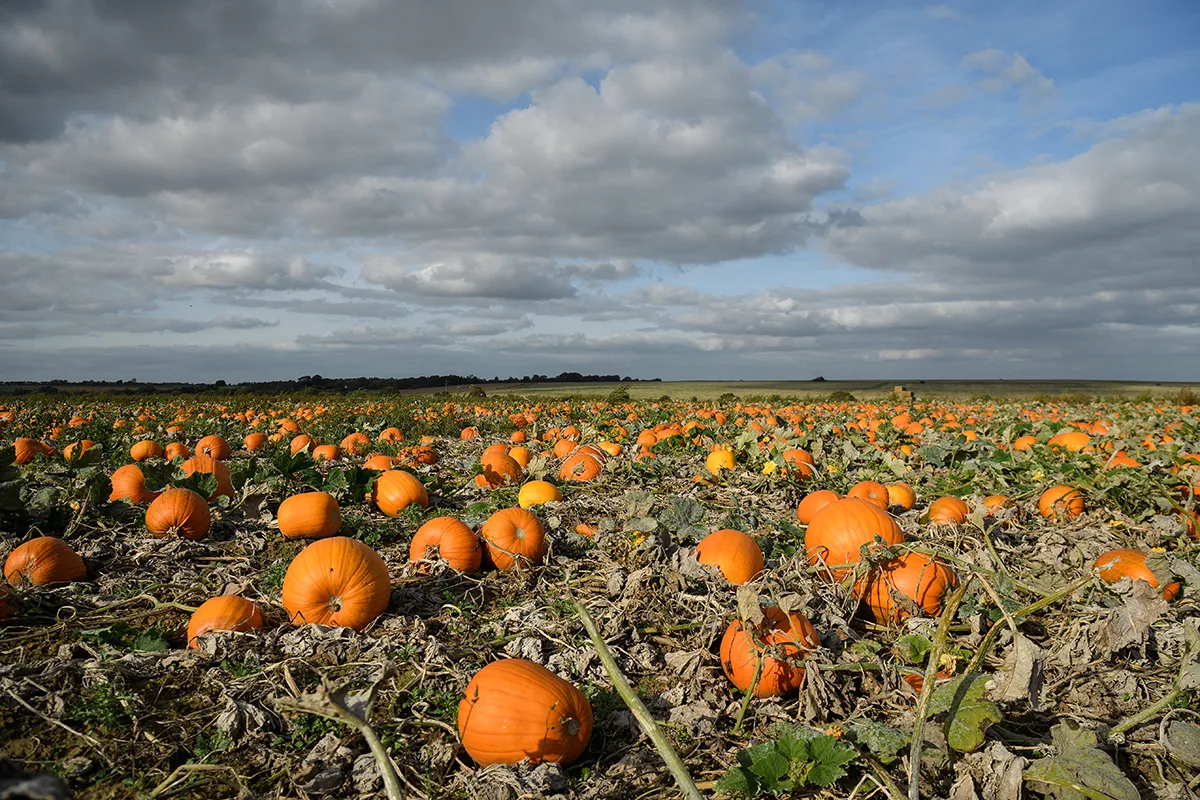
Pumpkin farming in the UK
Due to the ever-growing demand for the winter squash, UK farmers are producing more and more each year. In fact, Britain is home to Europe’s largest pumpkin grower, in Lincolnshire, producing a whopping 2 million pumpkins per year. But come the end of October, demand drops dramatically – so is it worth it for the farmers? Read Adam Henson's article on this opportunity.
More autumnal recipes:
Easy pumpkin recipes
Pumpkins have a lot more to offer than just creepy lanterns: they’re also an incredibly versatile ingredient in the kitchen. From creamy soups to sweet pies, there are plenty of ways to incorporate a delicious squash into your cooking.
Pumpkins are a member of the squash family and are believed to have originated in North America. Pumpkins are actually a type of fruit and there are around 500 varieties worldwide, growing in many different shapes and sizes. They take up to five months to grow and are harvested in the UK between October and December. Pumpkin provides an excellent source of vitamins, minerals and fibre, plus the seeds are full of zinc and antioxidants.
Come the end of All Hallows Eve, there will be many a pumpkin to use up – so why not rustle up something tasty?
Creamy curried pumpkin split pea dal by Sophie Gordon
From her cookbook – The Whole Vegetable – Sophie Gordon shares her vegan recipe for a pumpkin and split pea dal.
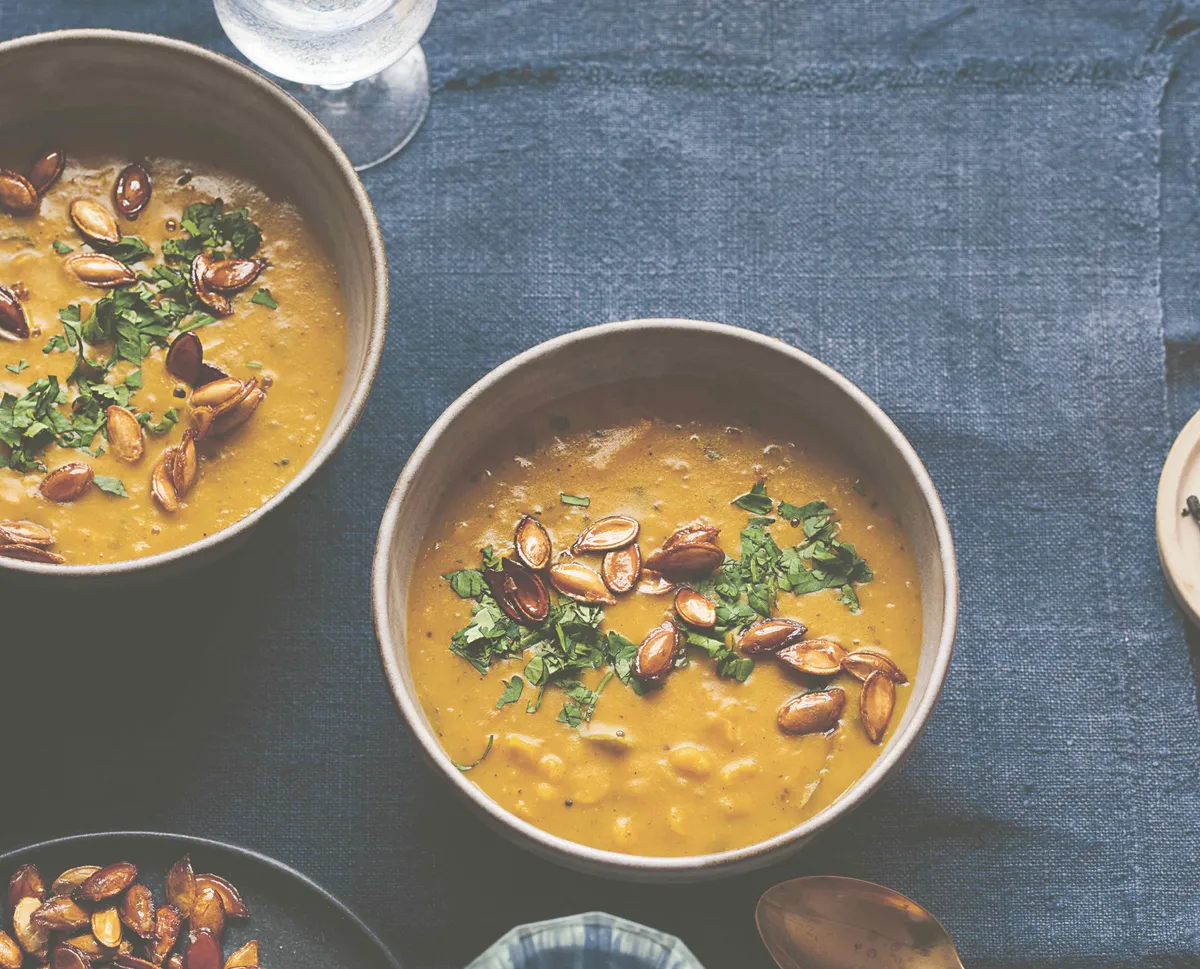
Pumpkin and bacon soup
Make this warming and easy pumpkin and bacon soup by Tom Kerridge.
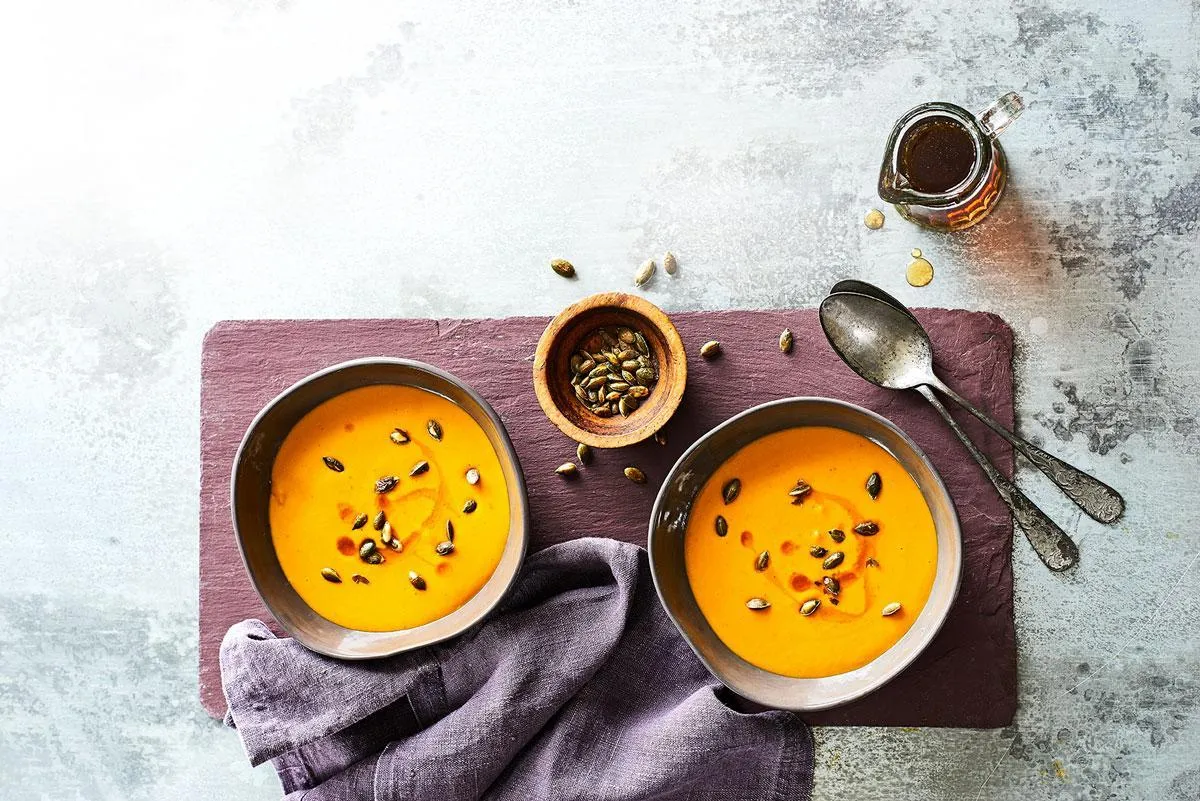
Pumpkin, fennel & Taleggio galette
Make this autumnal and delicious pumpkin, fennel and Taleggio galette with this easy recipe from BBC Good Food magazine
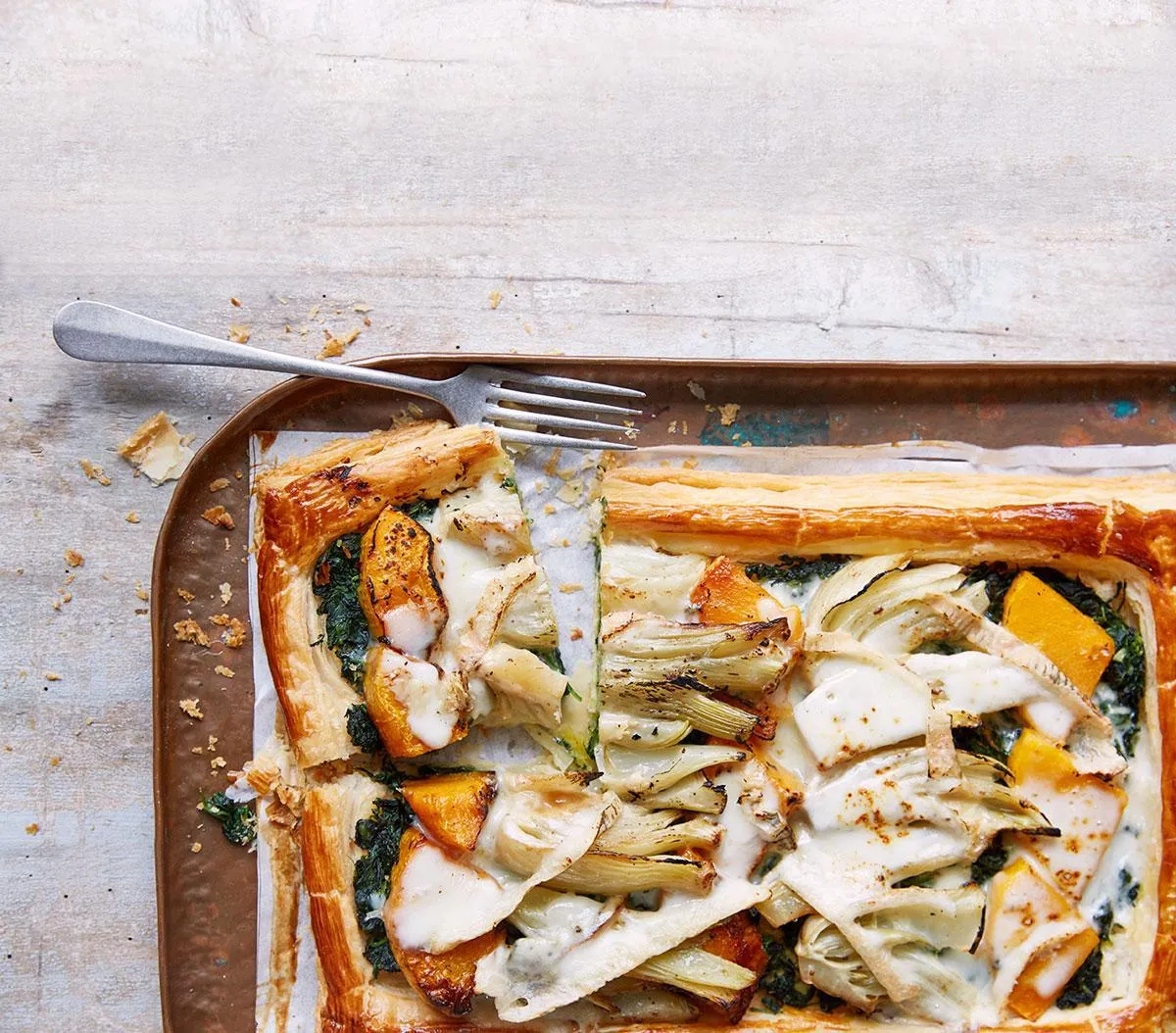
Pumpkin and sage spaghetti
This dish is a marriage of the sweet golden pumpkin, which is much loved in Mantua and Cremona in northern Italy, and spaghetti from further south.
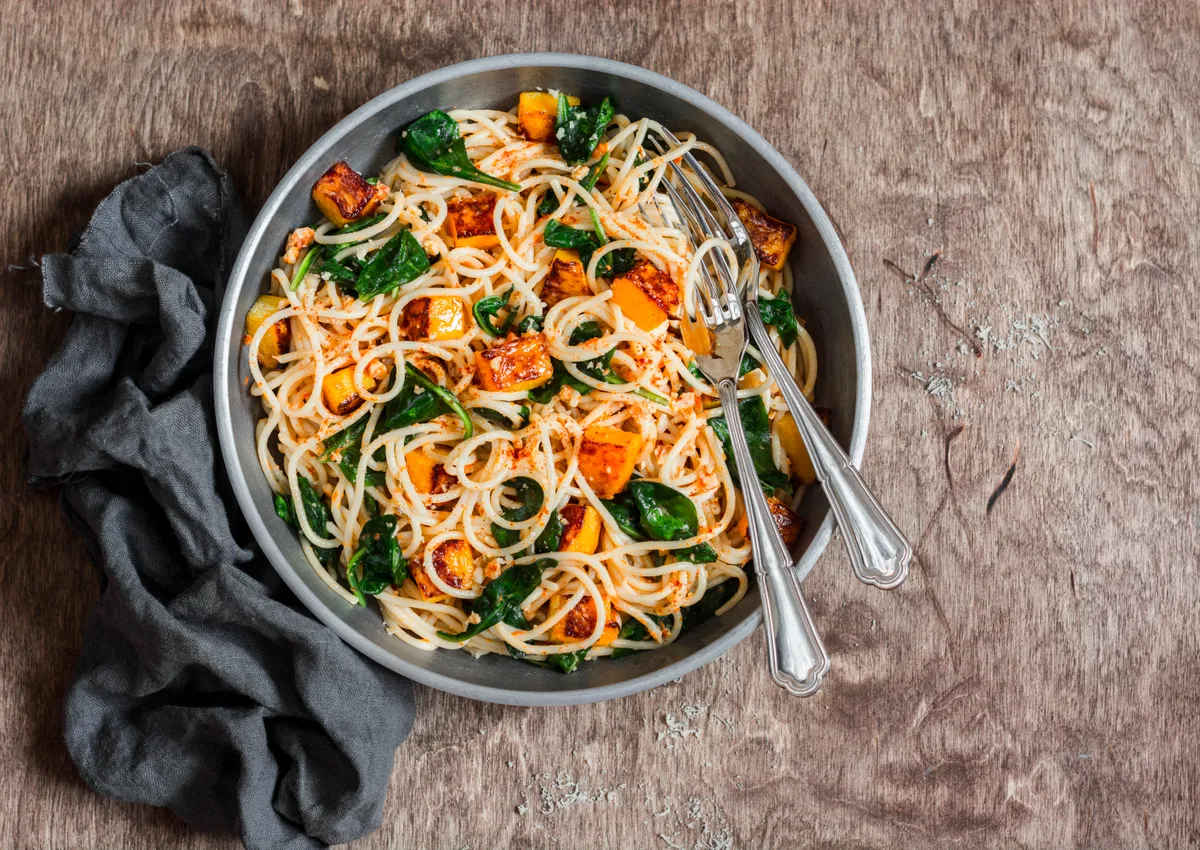
Pumpkin strudel
Make the most of pumpkin season with this recipe for a tasty pumpkin strudel.
